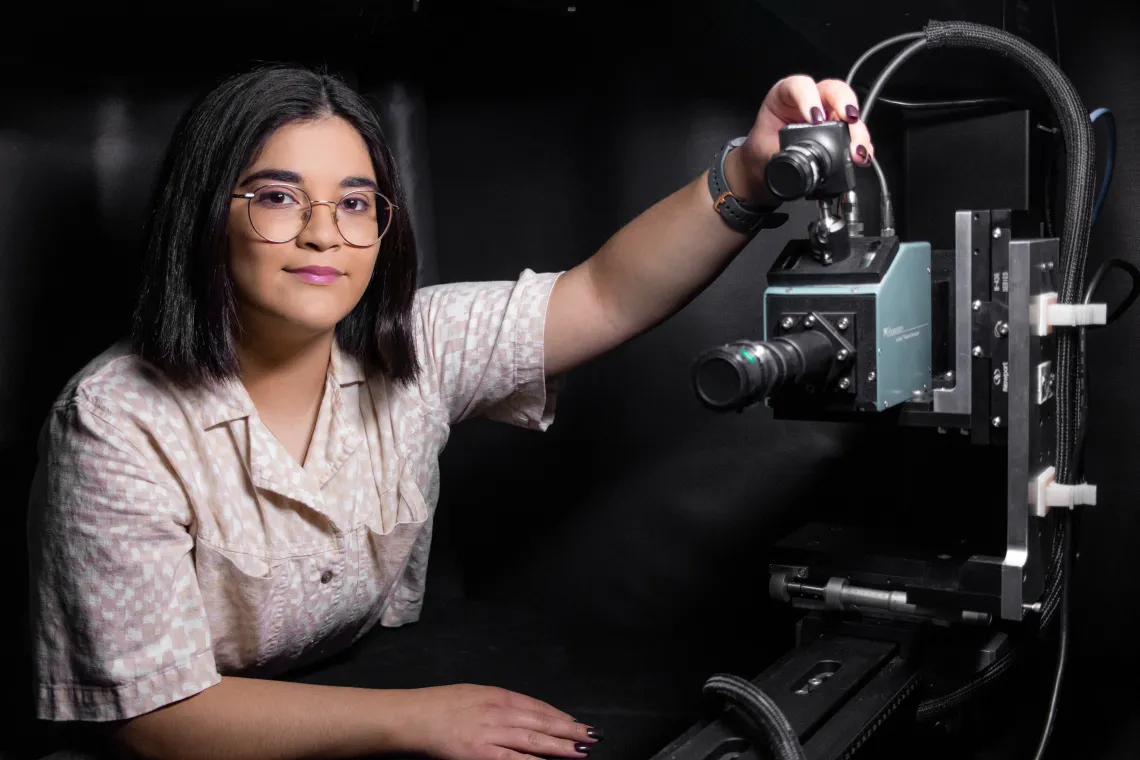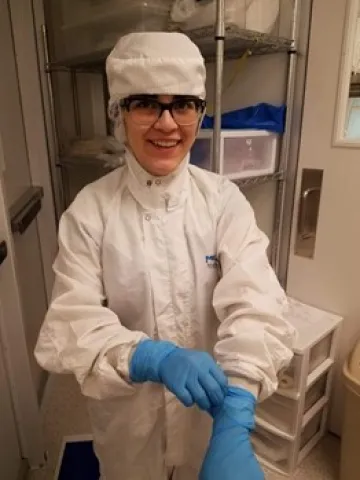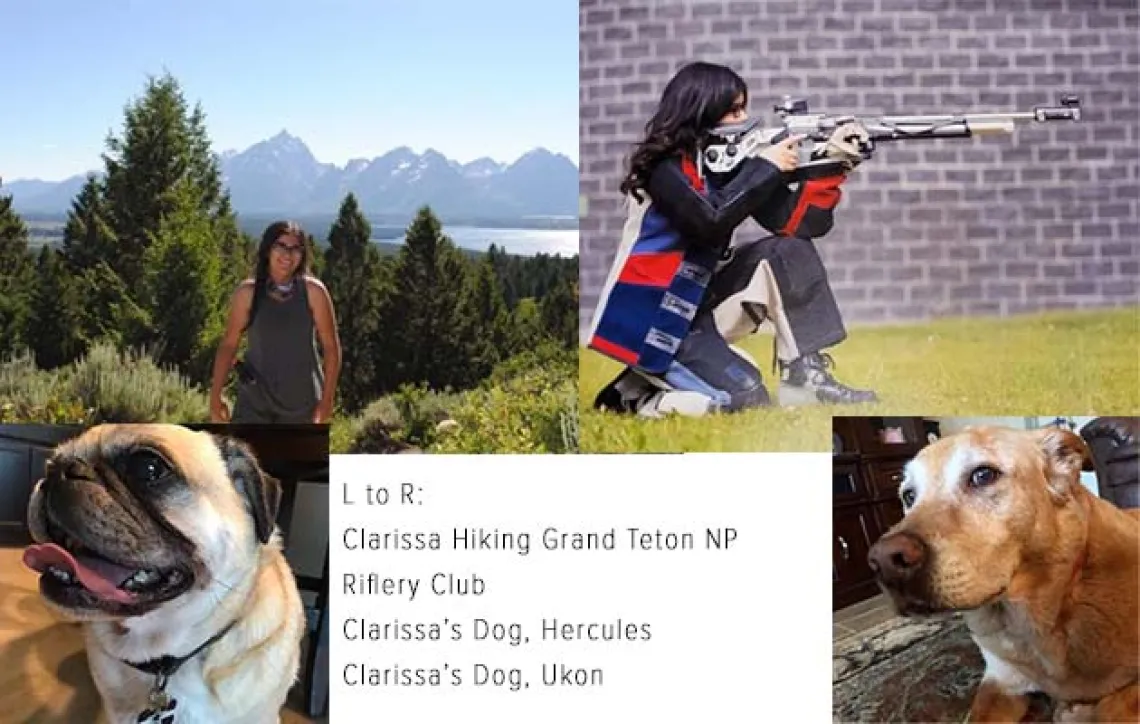Another Wavelength: Clarissa DeLeon

This week in Another Wavelength, we chat with 2nd year Ph.D. student Clarissa DeLeon. Clarissa is advised by Research Professor Meredith Kupinski.
Where are you from?
Haha, this is kind of a hard question for me to answer, my dad was in the Air Force so I have lived in many places. In order, I have lived in Hawaii (born there), Maryland, Azores, Alaska, Montana (for undergrad), Texas, and now Arizona. I call Texas home though, my parents (now) and extended family live there and that is where my grandparents immigrated to from Mexico in the mid-1960s.
What brought you to study optics?
As a freshman at Montana State University, I started in Electrical Engineering super excited to be challenged and do digital logic...then I took C-programming. I met with a tutor every week to get through the assignments and I felt like “if this is electrical engineering this is not for me”, so I considered switching to geology or sociology. Determined to stay in electrical engineering and remember what I loved about it so much, I went to one of the floors that had all the professors’ recent publications posted and I read the top sheet of every single one. When I got to Dr. Joseph Shaw’s paper on the optical properties of the thermal pools in Yellowstone, I was hooked. Then, Dr. Shaw gave me an undergraduate research position in his Optical Remote Sensor Laboratory working on a lidar system for insect detection and the rest is history. Also, you know what? C-programming isn’t so hard for me anymore.
Who is your hero in science?
Honestly, not sure I have a science hero per se, I didn’t grow up looking up to scientists because I couldn’t really relate to any of them—no one I knew was from the same background as me. Recently, while educating myself on female scientists to highlight when I taught a STEM class for Girls Inc. of San Antonio I discovered Ellen Ochoa. She got an electrical engineering undergraduate degree and her Ph.D. in optical systems working with Prof. Joseph Goodman. She went on to become the first Hispanic female astronaut and director of the Johnson Space Center. I definitely look up to her. For heroes, the first people that come to mind are all the women that came before me and fought for their right to be where I am right now, getting my Ph.D. Also, my parents, are truly the ones who taught me to question everything, be curious, and allowed me to read a TON. They aren’t scientists in the career sense of the word, but they are critical thinkers and love to learn, and isn’t that what science truly is? I know I would not be here answering these questions without any of the people I mentioned pushing boundaries and pursuing their dreams, so they are my heroes.
Describe your research in 20 words or fewer.
Designing and deploying ultraviolet polarimeters to gain a deeper understanding of the changes in Earth’s climate system.

Describe your research in 200 words or fewer.
Pollution, dust, and smoke are common atmospheric particulates, called aerosols. These aerosols interact with sunlight through scattering and absorption, depending on the size of the aerosol and their optical properties e.g. index of refraction. The size of aerosols typically ranges between a few hundredths of a micron to tens of microns. At the lower end of this size range, scattering and absorption increase rapidly with decreasing wavelength. Absorption in the UV (100-400 nm) is particularly strong for aerosols originating from black and brown carbon, the dominant aerosols in wildfire smoke. My research focuses on using ultraviolet polarimetry to study these naturally occurring light-matter interactions. Currently, I have some proposals under consideration for funding the study of wildfire smoke. Specifically, looking at how it propagates, ages, and whether it is predominately black or brown carbon.
Name three neat facts about you.
- In high school, I was captain of the riflery team and got to compete in the Junior Olympics, and train at the Olympic training center in Colorado Springs.
- My other scientific passion is biomimicry -- it just makes so much sense to model our scientific endeavors of the world around us.
- My life goal is to visit/camp in every US National Park.

